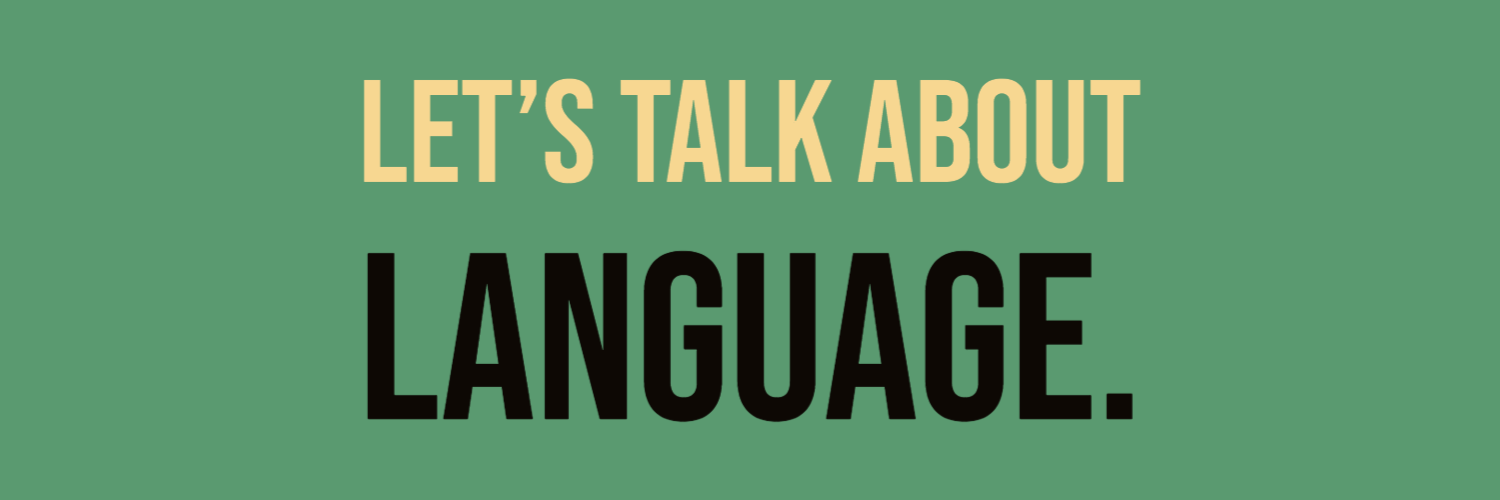Blue-footed boobies aren’t the only things that evolve – let’s talk about language.

Language evolves and changes over time. It didn’t take 425 years for us to drop “thine” and “art though” from our collective lexicon – it happened so slowly that we likely didn’t notice the change. In 2002, I told my parents that my friend got a “gnarly” bruise on the playground. I wouldn’t say that today, but at the time, “gnarly” was a popular word for sun-soaked Florida kids that I picked up through media consumption (probably the Nickelodeon cartoon “Rocket Power”).
So, why does language evolve? Why do we pick up new words and lose others? This is an important question for public relations professionals to consider, as we are the language experts for our clients. We need to recognize when language is evolving, understand why it’s changing and determine whether or not we should adapt our outputs to reflect the societal wave.
Here are a few reasons why language changes and my recommendations on public relations responses.
Something new mandates language change.
With discovery and invention comes new or adapted language. Think about the word “smart.” When the iPhone hit the market in 2007, the cellular phone industry turned upside down. Connectivity was the name of the game, and the category of “smartphone” became popular nomenclature (even though IBM called their original phone a smartphone in the early 90s). But it didn’t stop there. “Smart” became synonymous with any device that included additional connectivity features. We do not blink when we see the words “smart car” or “smart house,” as the implication is universally understood. As new products, services and concepts enter the market, our language adjusts to address the new items. At the same time new language comes in, old language is often abandoned. What we once called the “World Wide Web” is now just the internet.
Depending upon your client, becoming an early adopter of new language in this sense can make you look ahead of the curve or modern. Sticking with older language might be necessary for understanding or especially appealing to your audience. It requires careful audience analysis and self-reflection to determine whether and when you should adopt new language.
Political, historical, scientific and social movements spur change.
The timing of this blog post is apt. Though the post was planned in December 2019, I’m writing this in June 2020 during the midst of a pandemic and protests. This moment in history comes with its own language. I did not know what “social distancing” was six months ago. But now, I would bet that even children in preschool have some understanding of the concept. Radical overnight change as a result of the pandemic created a completely new set of terminology, but movements can also create change slowly. For example, “they” as a pronoun was previously only used to describe a group of people of which the speaker was not a member. Because of advocacy within the LGBTQ+ community, “they” is now officially accepted as a personal pronoun within the AP Stylebook, though many companies and individuals adopted this practice earlier than AP’s ruling.
If you’re communicating about or during a movement, look to governing language organizations like AP to determine what their stance is on adapted terminology. Simultaneously, don’t be afraid to make your own organizational stances when it feels like it’s the right thing to do. Consult with your team and engage diverse perspectives to determine if adjusting your language to a movement is appropriate.
Popular culture drives trends.
Media drives narratives, and TV characters, musicians and performers of all types add new and exciting words to our social sphere. Think of terms like “bend and snap,” “as if,” and most recently, “OKURRR.” These pop phrases (or sounds) had little to no meaning before Elle Woods, Cher Horowitz and Cardi B brought them to our attention.
These phrases can be fun to use on social media, in our email newsletters and on TikTok. But you have to make sure your messages are brand appropriate. I think the Memphis Grizzlies could tweet a slam dunk GIF with the message “OKURRR” successfully. Ernst & Young, not so much.
Because PR and marketing people decided it was time to flip the script.
Here is where language gets fun. Public relations professionals aren’t just blown hither and yon by forces beyond their control. We can CREATE language change if we’re clever. Marketing and public relations campaigns can tell people what to say and can imprint lasting expressions in the minds of consumers. Maybe this says something about my taste, but within my friends circle, if I ask for a silver bullet, I’m handed a Coors Light, not a werewolf-slaying literal silver bullet. Coors coined that phrase, and now it’s part of our common language.


